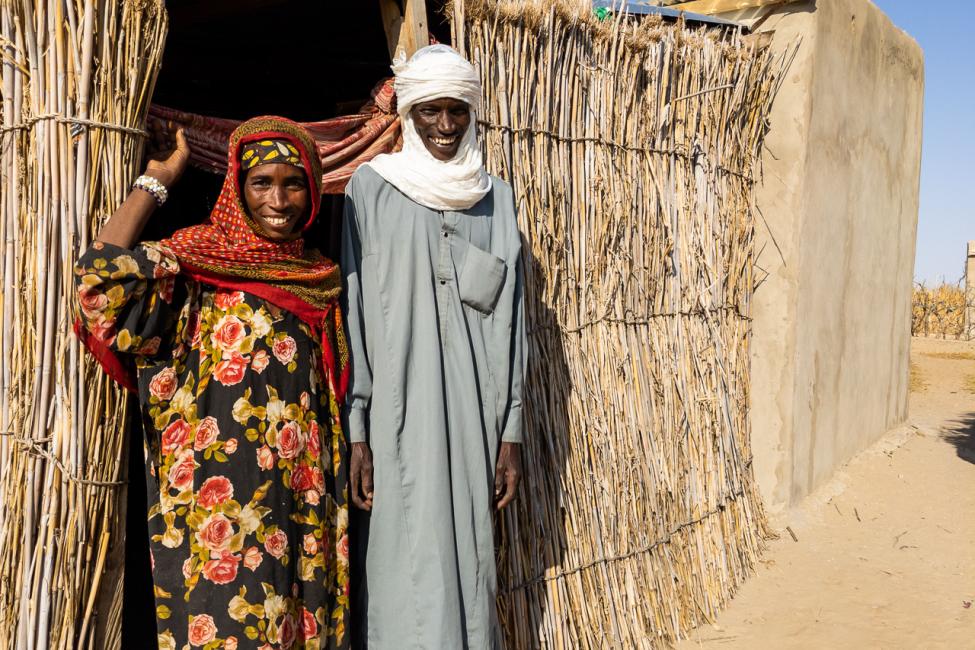-
Who We Are
WHO WE AREThe International Organization for Migration (IOM) is part of the United Nations System as the leading inter-governmental organization promoting since 1951 humane and orderly migration for the benefit of all, with 175 member states and a presence in over 100 countries. IOM has had a presence in Chad since 2009.
About
About
IOM Global
IOM Global
-
Our Work
Our WorkAs the leading inter-governmental organization promoting since 1951 humane and orderly migration, IOM plays a key role to support the achievement of the 2030 Agenda through different areas of intervention that connect both humanitarian assistance and sustainable development. Across Chad, IOM provides a comprehensive response to the humanitarian needs of migrants, internally displaced persons, returnees and host communities.
- Data and Resources
- Take Action
- 2030 Agenda
In 2015, Adoum was displaced from Ngouboua, his native village in Chad’s Lac Province, by a brutal attack perpetrated by non-state armed actors.
“We escaped without taking anything with us, not even our cattle,” Adoum remembers.
With his wife Zenaba and their three children, Adoum crossed the semi-arid lands surrounding Lake Chad on foot for days before settling in Taal, a community located some 45 kilometres away from their home which currently hosts around 2,000 other internally displaced persons (IDPs). When they arrived in Taal, community members helped them find dry sticks, straw and some old plastic sheeting to build makeshift shelters. But these shelters would not withstand the extreme weather conditions around Lake Chad, where temperatures can reach up to 50 degrees Celsius, and heavy rains and storms regularly flood communities.
Increasing numbers of people have fled their homes in recent years due to insecurity and extreme weather events in Chad’s Lac Province. The International Organization for Migration (IOM) works with local authorities and partners to provide emergency and durable assistance to IDPs in Taal and other displacement sites across Chad’s Lac Province.
In particular, the Organization helps IDPs secure new homes that keep families protected and safe dwellings designed to withstand harsh winds or flash floods common in the area.
Since the first wave of displacement occurred around Lake Chad Province, more than 40,000 vulnerable people, like Adoum and his family, have received shelter assistance and emergency kits.
The assistance starts with a rapid assessment and registration of displaced persons. Through this process, displaced persons can access additional assistance from other humanitarian partners.
People in need receive emergency kits which contain basic items such as jerry cans, sleeping mats, mosquito nets, cooking utensils, feminine hygiene items, clothes, a medium-size bucket, and soap.
For those recently displaced, emergency shelters, which can last between three to five years, are provided. They are made of locally procured materials (wood, straw, corrugated iron sheets for the roof) and are built jointly among community members.
Semi-durable shelters, which can last for more than five years, are constructed in communities where people have been displaced over longer periods. These are made with sun-dried brick walls reinforced with clay and provide long-term protection from the extreme weather conditions Adoum and displaced persons must face in the Lake province.
Since 2015, IOM has built more than 2,700 emergency and semi-durable shelters for displaced households in Chad’s Lac Province.
For Adoum and Zenaba, these new homes have changed their lives.
“Before, my family and I slept in a straw shelter and when it rained, we had to stay awake to protect our belongings,” says Zenaba. “Now, we can sleep in peace,” she adds.
“Since arriving here, we have all become a family. We live in peace with our neighbours,” Zenaba continues.
A key benefit of IOM’s shelter programme is community engagement which ensures sustainability.
The semi-durable shelters are designed, planned, and built jointly by local entrepreneurs, community members and displaced persons, an approach which benefits all parties involved in the process.
For instance, all the straw used to build the various shelters are woven by local women’s groups, providing them with an opportunity to earn money for their household needs while supporting the humanitarian response.
The community-based approach also ensures that the shelters are designed with earth-friendly local construction materials which reduces construction costs and contributes to the local economy. Displaced persons also can learn new skills such as brick layering and ceiling repair which they can later market to earn a living.
The shelters also follow international environmental and protection standards.
In Tagal, a displacement site hosting 750 IDPs, IOM is piloting a new type of durable shelter. The new models are built with timber and lumber columns for the structure with walls made of straw and wire mesh plastered with cement and sand for added durability. What makes these “durable shelters” unique is that IDPs can construct them with materials used in the existing emergency shelters.
Because they no longer have to worry about having a roof over their heads, Adoum and Zenaba can now focus on rebuilding their lives and ensuring their children’s education. But more remains to be done to ensure that the 457,000 people displaced in Chad’s Lac Province are safe and protected.
IOM has started rolling out its framework for finding durable solutions to the displacement situation in the province. This framework includes working with an experienced site planner to ensure that displacement sites can become new homes where IDPs can safely rebuild their lives.






